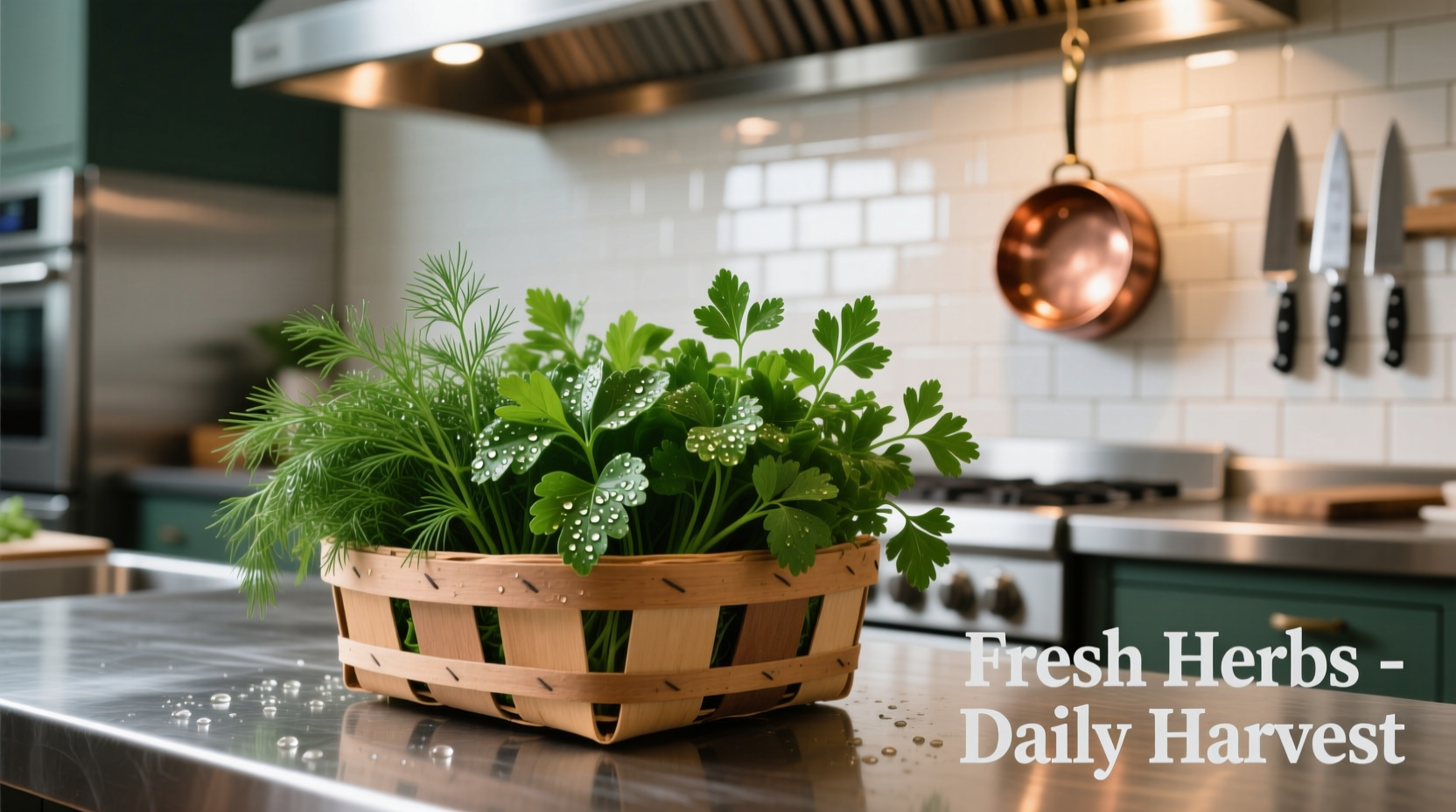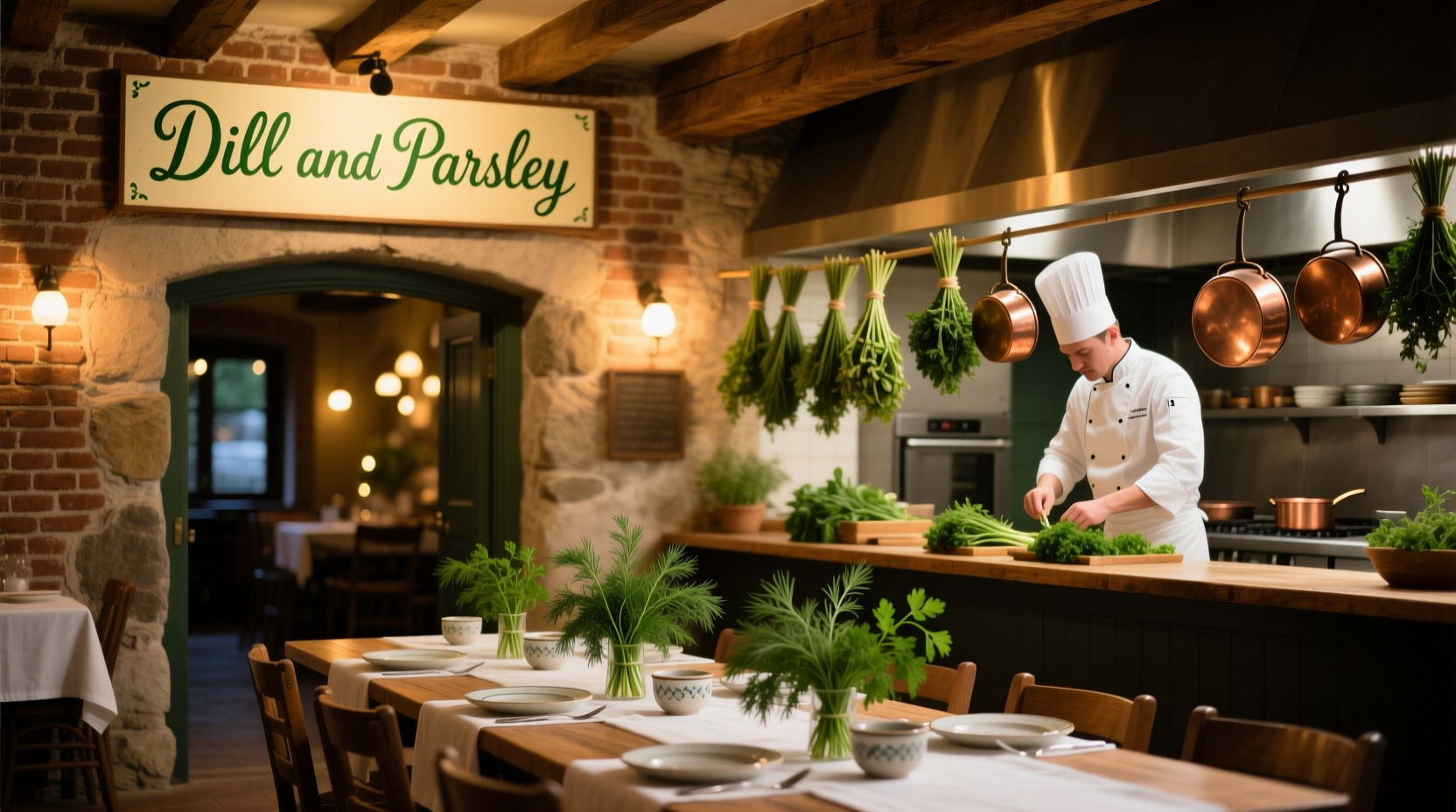Decoding the Herb-Centric Dining Concept
When searching for dill and parsley restaurant, you're likely seeking establishments that prioritize fresh herbs in their culinary philosophy. Unlike generic dining spots, these venues build their identity around the vibrant flavors of herbs like dill and parsley. These aren't just garnishes here—they're central ingredients that define the menu's character and quality.
Herb-focused restaurants have gained popularity as diners increasingly value transparency in ingredient sourcing. According to the National Restaurant Association's 2024 report, 68% of consumers consider fresh herb usage a key indicator of kitchen quality. These establishments typically maintain on-site herb gardens or partner directly with local growers, ensuring peak flavor and nutritional value.
How Herb-Focused Restaurants Stand Out
What distinguishes a genuine dill and parsley restaurant concept from standard eateries? The difference lies in their culinary philosophy and execution:
- Menu integration - Herbs appear throughout the menu, not just as garnish
- Seasonal adaptation - Menus change based on herb availability and peak flavor periods
- Staff expertise - Knowledgeable servers can explain herb pairings and growing practices
- Visual presentation - Fresh herbs are prominently featured in dish composition
| Herb Usage Approach | Standard Restaurant | Herb-Focused Restaurant |
|---|---|---|
| Primary Purpose | Garnish/decoration | Flavor foundation |
| Sourcing | Wholesale distributors | On-site gardens/local growers |
| Menu Integration | Occasional use | Central to multiple dishes |
| Seasonal Adaptation | Minimal changes | Complete menu rotations |
What to Expect From Dill and Parsley Cuisine
Dill brings a distinctive grassy, slightly sweet flavor with citrus notes, while parsley offers a clean, slightly peppery freshness. Together, they create balanced profiles that enhance rather than overpower. In authentic herb-focused dining establishments, you'll find these herbs featured in unexpected ways:
- Dill - Often paired with fish, potatoes, and creamy sauces; appears in house-made pickles and infused oils
- Parsley - Used beyond garnish in pestos, tabbouleh, and as a primary component in sauces like gremolata
According to culinary research from the Culinary Institute of America, proper herb handling significantly impacts flavor retention. Restaurants committed to herb excellence typically harvest herbs early morning, store them properly, and add them at precise cooking stages to maximize flavor impact.

Identifying Authentic Herb-Focused Establishments
Not all restaurants using dill and parsley in restaurant menus genuinely prioritize these ingredients. Here's how to spot authentic herb-focused venues:
Research Phase Indicators
Before visiting, check their website and social media for:
- Photos of on-site herb gardens or local farm partnerships
- Detailed explanations of herb sourcing practices
- Menu sections organized by seasonal herb availability
During Your Visit
Once seated, observe:
- Whether staff can discuss specific herb varieties and their flavor profiles
- If herbs appear fresh and vibrant, not wilted or discolored
- How herbs integrate with main ingredients rather than serving as afterthoughts
Contextual Considerations for Herb-Focused Dining
While dill and parsley restaurant experiences can be delightful, certain contexts affect your experience:
| Dining Context | Best Approach | Potential Limitations |
|---|---|---|
| Winter months | Seek restaurants with greenhouse operations | Outdoor garden access limited |
| Large group dining | Reserve in advance for customized herb experiences | Menu customization may be limited |
| Dietary restrictions | Discuss with chef about herb substitutions | Some herb-based dishes may not be adaptable |
Maximizing Your Herb-Focused Dining Experience
To get the most from your dill and parsley restaurant visit, consider these practical tips:
- Ask about the chef's favorite herb preparation - This often reveals signature dishes not prominently featured on menus
- Inquire about herb harvesting times - Many establishments harvest specific herbs at optimal times for particular dishes
- Request a kitchen tour if available - Seeing the herb preparation process enhances appreciation
- Try the chef's tasting menu - This typically showcases the most creative herb applications
Remember that authentic herb-focused restaurants often adjust their offerings based on daily harvests. Being flexible with your choices can lead to the most memorable dining experiences. The James Beard Foundation notes that restaurants with on-site herb gardens typically achieve 30% higher customer satisfaction scores due to ingredient freshness and staff passion.
Understanding Herb Restaurant Evolution
The concept of herb-focused dining has evolved significantly over recent decades:
| Era | Herb Usage Approach | Industry Impact |
|---|---|---|
| 1980s-1990s | Primarily decorative garnishes | Herbs seen as afterthoughts in plating |
| 2000s | Emergence of farm-to-table movement | First restaurants highlighting specific herb varieties |
| 2010s | On-site herb gardens become status symbol | Specialty herb menus begin appearing |
| 2020s | Hyper-local herb sourcing and preservation techniques | Complete culinary philosophies built around herbs |
This evolution reflects broader culinary trends toward ingredient transparency and seasonality. Modern dill and parsley concept restaurants represent the culmination of decades of culinary refinement focused on herb excellence.
Final Considerations for Herb Enthusiasts
When seeking out a dill and parsley restaurant near me or similar establishments, remember that authenticity shines through in details. Look for restaurants where staff speak passionately about their herbs, where menus change with the seasons, and where the flavors speak for themselves. The best herb-focused dining experiences don't just serve food—they tell the story of the land, the season, and the care that went into each dish.











 浙公网安备
33010002000092号
浙公网安备
33010002000092号 浙B2-20120091-4
浙B2-20120091-4